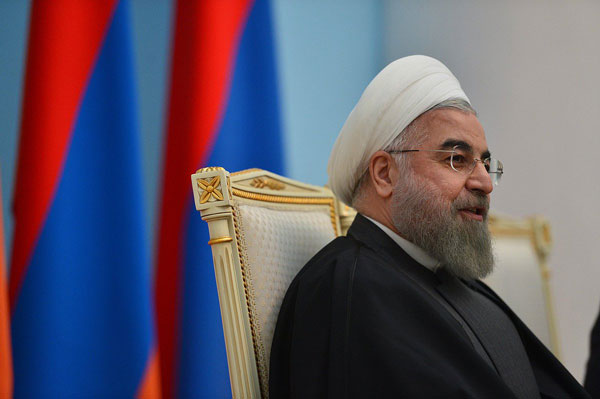
Tehran, Iran | AFP | Violent demonstrations have rocked Iran for almost a week, leaving at least 21 people dead, with the head of Iran’s Revolutionary Guards on Wednesday declaring the “end of the sedition”.
The protests that started over the economy before turning against the Islamic regime as a whole are the biggest in the tightly controlled country since unrest over a disputed election in 2009.
Here is a summary:
– First demonstrations –
A few hundred demonstrators gather in Mashhad and several other towns on December 28 to protest high living costs after a call goes out on the Telegram social messaging service.
Videos on reformist media show protesters focusing their ire on President Hassan Rouhani but there are also slogans lambasting the entire regime and Iran’s involvement in conflicts around the Middle East.
– Protests spread –
The next day larger-scale protests flare up in more cities including western Kermanshah and religious centre Qom, where footage shows hundreds of demonstrators chanting “Death to the dictator” and “Free political prisoners”.
First Vice President Eshaq Jahangiri suggests hardline opponents of Rouhani’s government may be behind the demonstrations.
– Warnings, violence, deaths –
On December 30, regime supporters rally around the country for officially sanctioned demonstrations to commemorate the defeat of the 2009 protest movement.
Interior Minister Abdolrahman Rahmani Fazli calls on the public to avoid “illegal gatherings”.
But the anti-government protests grow. In Tehran, scuffles break out and videos show demonstrators attacking a town hall, overturning a police car and burning the Iranian flag.
The unrest claims its first victims when two people are killed in the western town of Dorud. Some 200 people are detained in Tehran and scores more elsewhere.
– 10 die in one night –
On December 31, the authorities issue more warnings. In a bid to stall further demonstrations, the authorities block access to online messaging services.
Rouhani insists people are “absolutely free” to express their anger but “criticism is different to violence and destroying public property”.
Nevertheless the unrest continues as videos on social media show demonstrations hitting areas across the country for a fourth night.
Iranian media and officials report 10 people died in protests overnight Sunday to Monday in the west of the country.
In a second statement on January 1, Rouhani plays down the protests as “nothing” and insists the Iranian people will “respond to rioters and lawbreakers”.
US President Donald Trump says it is “time for change” in Iran.
Fresh protests break out in Tehran at nightfall.
– More deaths, arrests –
State television says nine people, including a policeman and Revolutionary Guards member, are killed in unrest overnight.
Six died in the town of Qahderijan, in the central province of Isfahan, where protesters had tried to storm a police station, the state broadcaster reports.
The number of those detained in Tehran rises to around 450.
– ‘Enemies’ –
Supreme leader Ayatollah Ali Khamenei breaks his silence, saying on January 2 that Iran’s “enemies have united and are using all their means” against the regime.
US envoy Nikki Haley calls for emergency sessions on Iran at the UN Security Council and the Geneva-based UN Human Rights Commission.
Rouhani phones French leader Emmanuel Macron to demand action against a “terrorist” Iranian opposition group he accuses of fomenting the protests, likely referring to the Paris-based Mujahedeen-e-Khalq.
The French president calls for “restraint and appeasement”.
– Pro-regime defiance –
On January 3, after few reports of anti-regime protests overnight, tens of thousands of regime supporters gather across the country in a massive show of strength.
Chants of “Leader, we are ready” are heard as images show thousands rallying in the cities of Ahvaz, Kermanshah, Gorgan, and elsewhere.
In a telephone call, Rouhani tells his Turkish counterpart Recep Tayyip Erdogan the protests will end in a few days.
The commander of the Revolutionary Guards, General Mohammad Ali Jafari announces “the end of the sedition”, saying that there were fewer than 15,000 “troublemakers” nationwide.
The UN Secretary General Antonio Guterres says “further violence must be avoided”.
A senior White House official says the US is considering new sanctions on Iran over the crackdown.
 The Independent Uganda: You get the Truth we Pay the Price
The Independent Uganda: You get the Truth we Pay the Price


